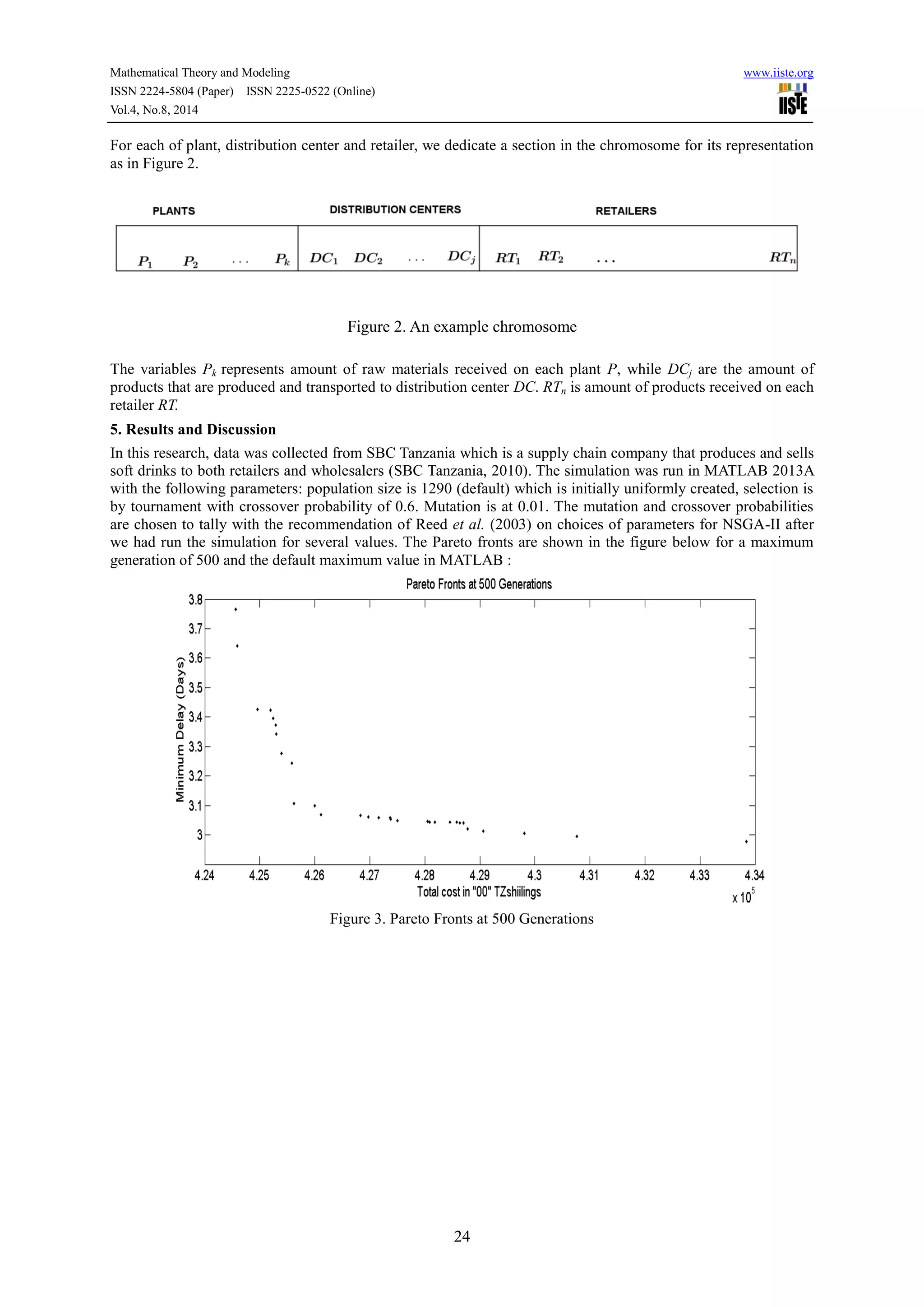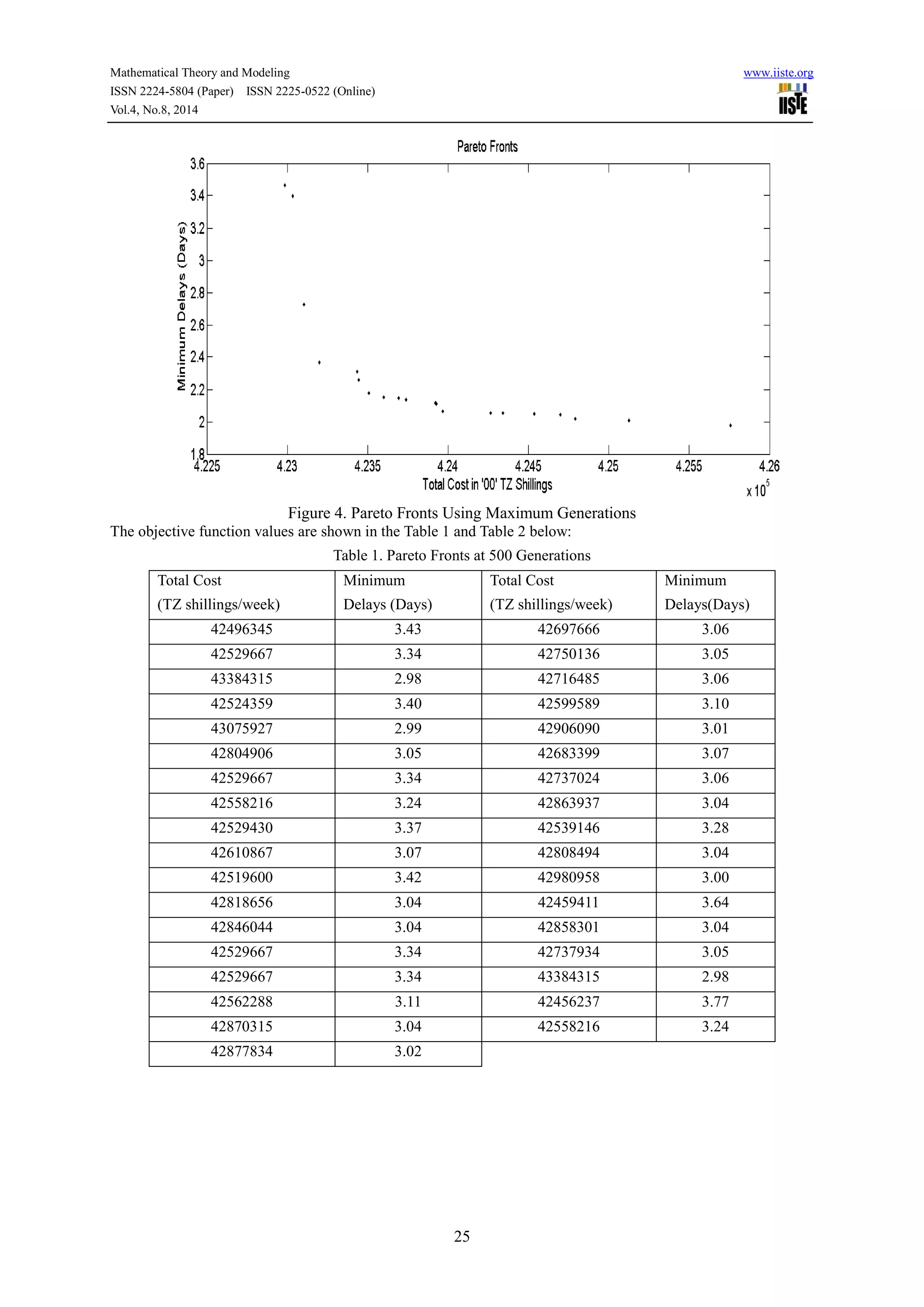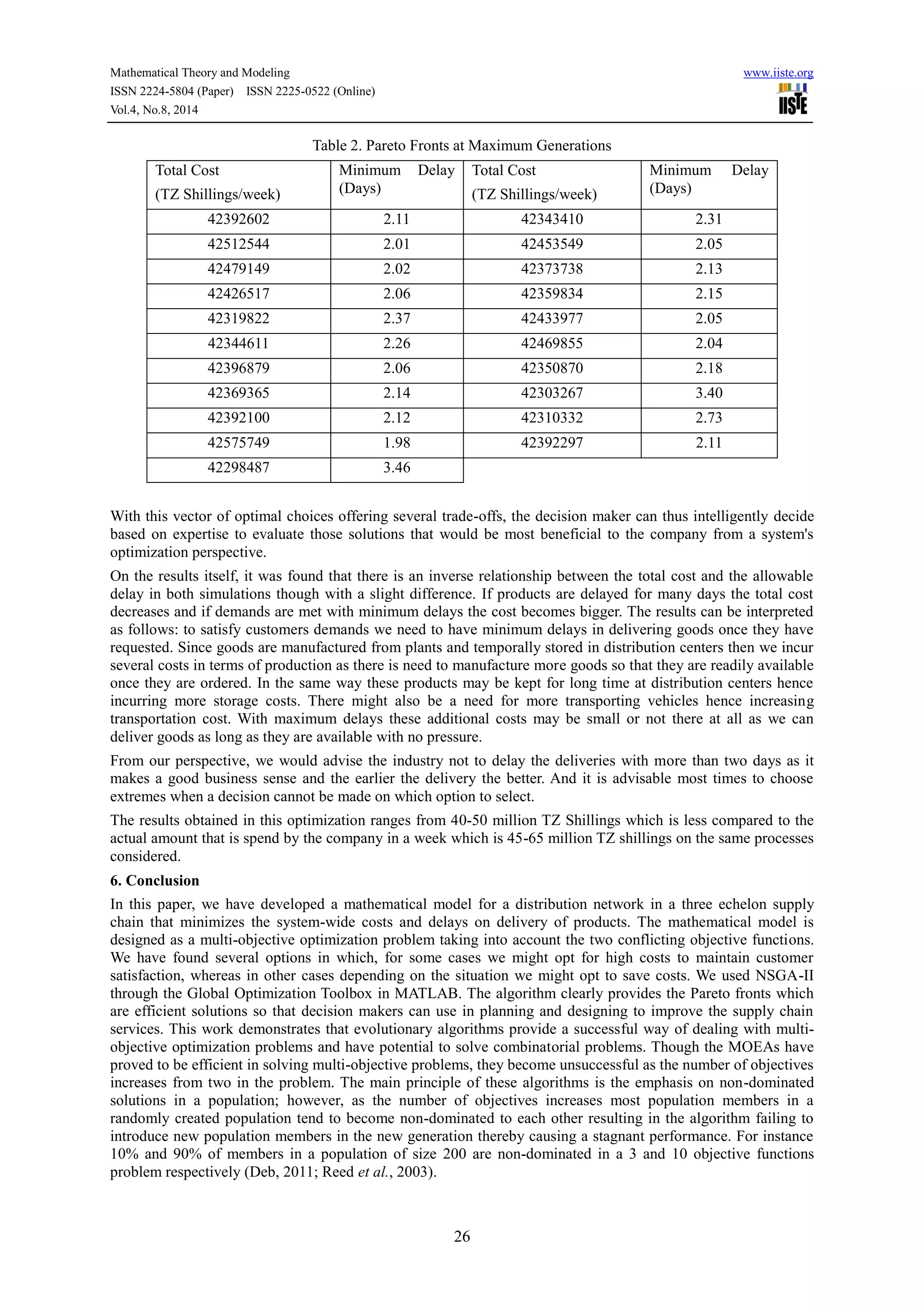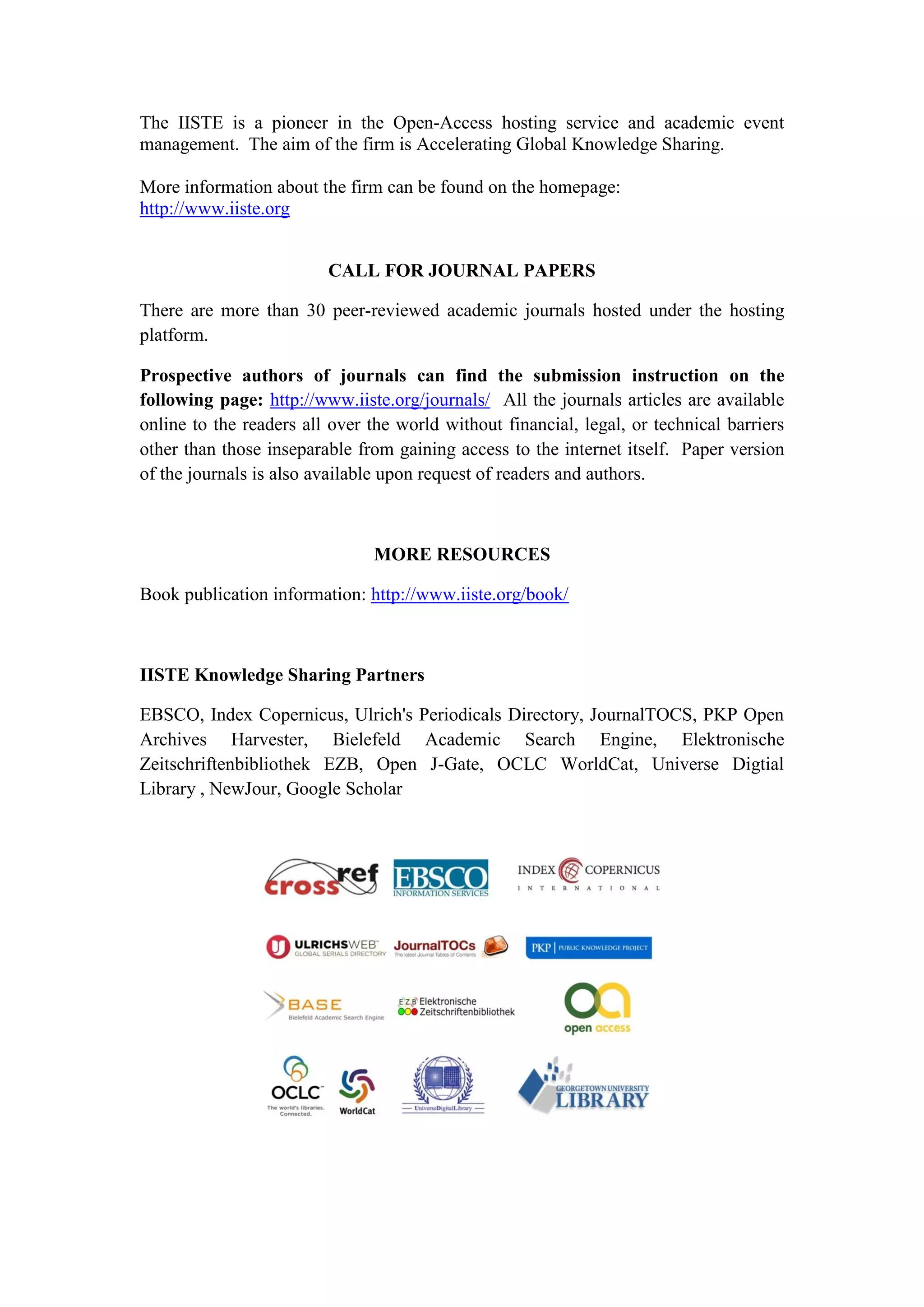This paper presents a bi-objective model aimed at optimizing a multi-stage supply chain network using genetic algorithms. The model focuses on minimizing system-wide costs and delivery delays while considering uncertainties in demand and capacity. It highlights the conflicting objectives within the supply chain and proposes robust methods for identifying Pareto fronts in multi-objective optimization problems.
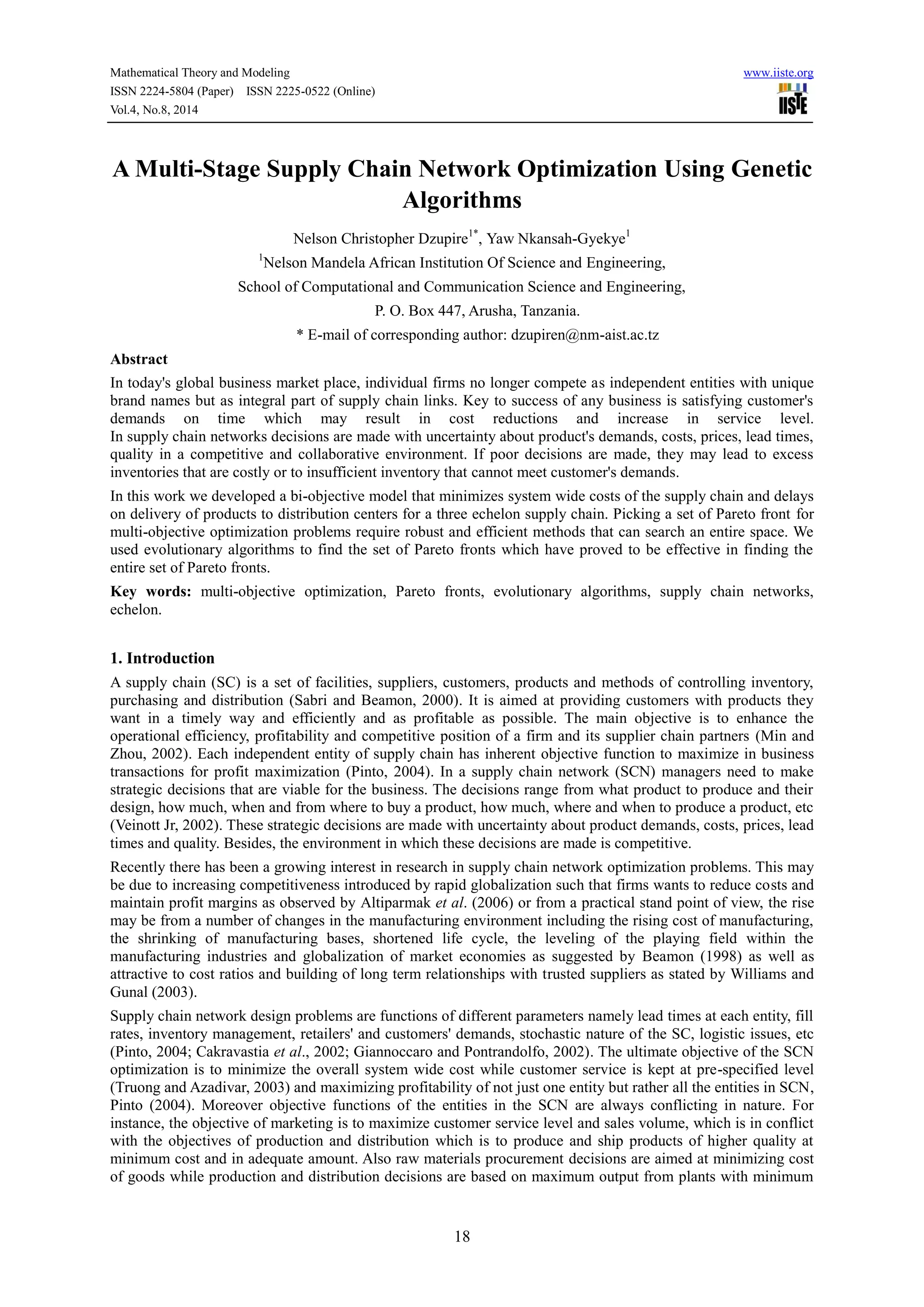
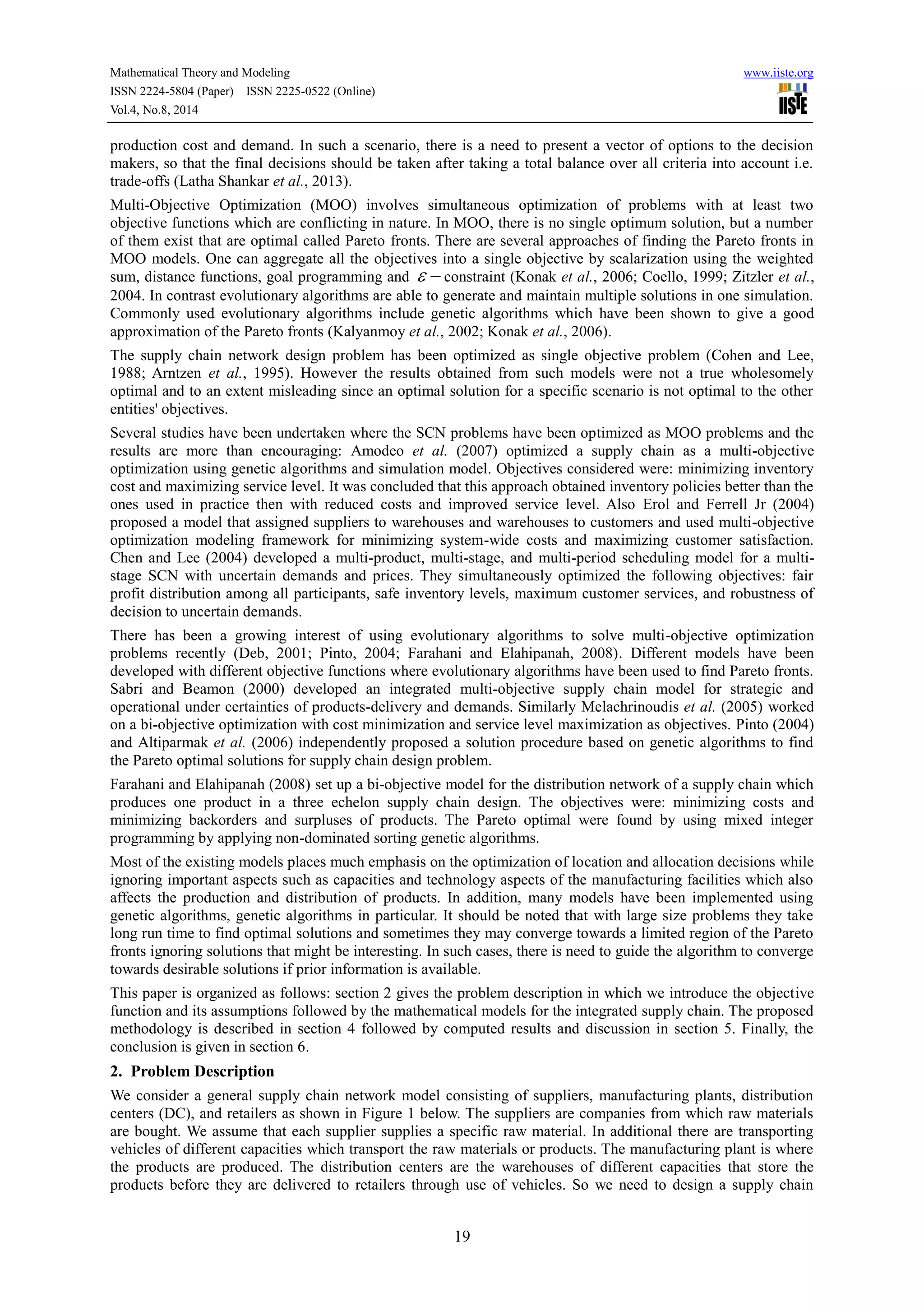
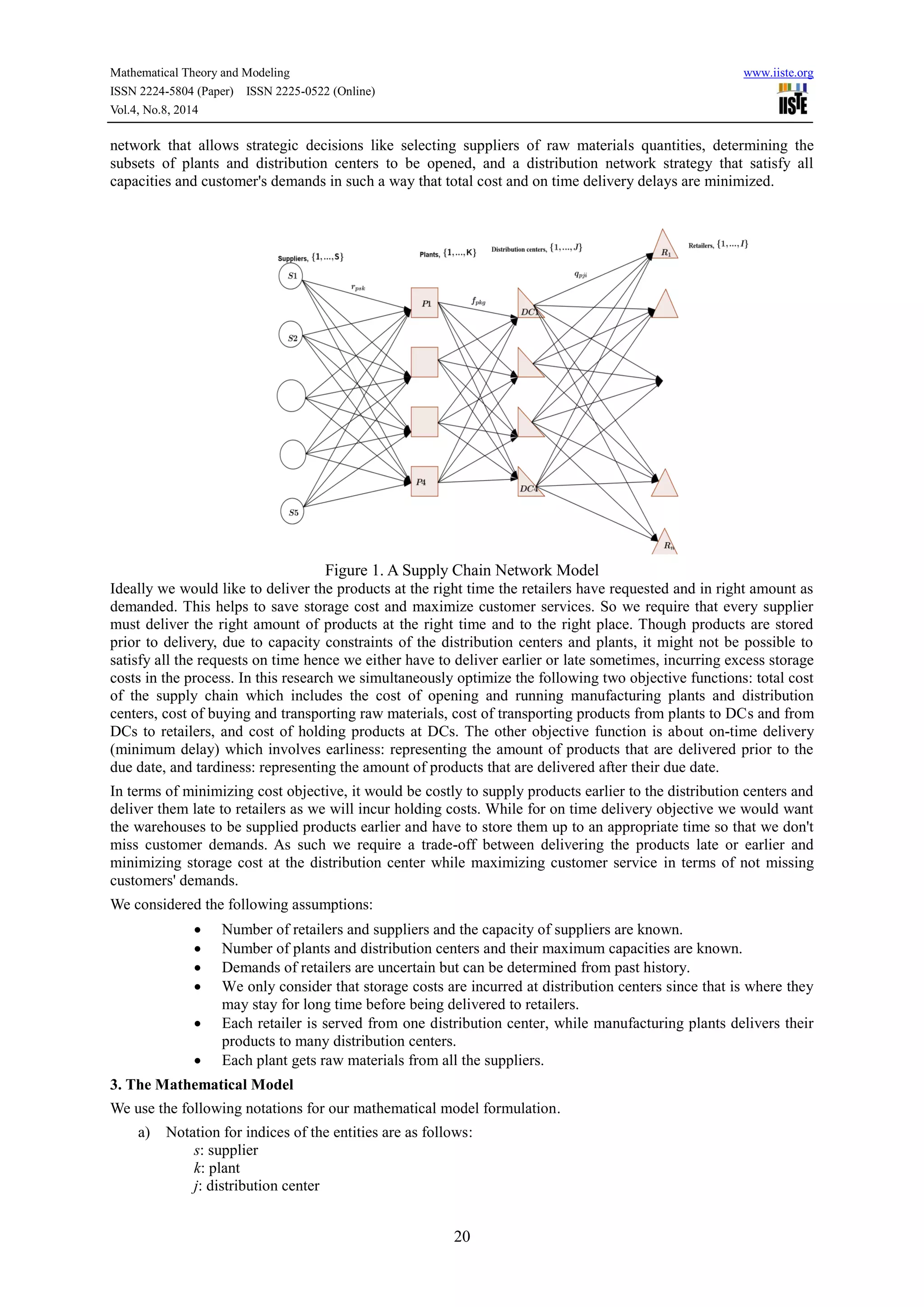

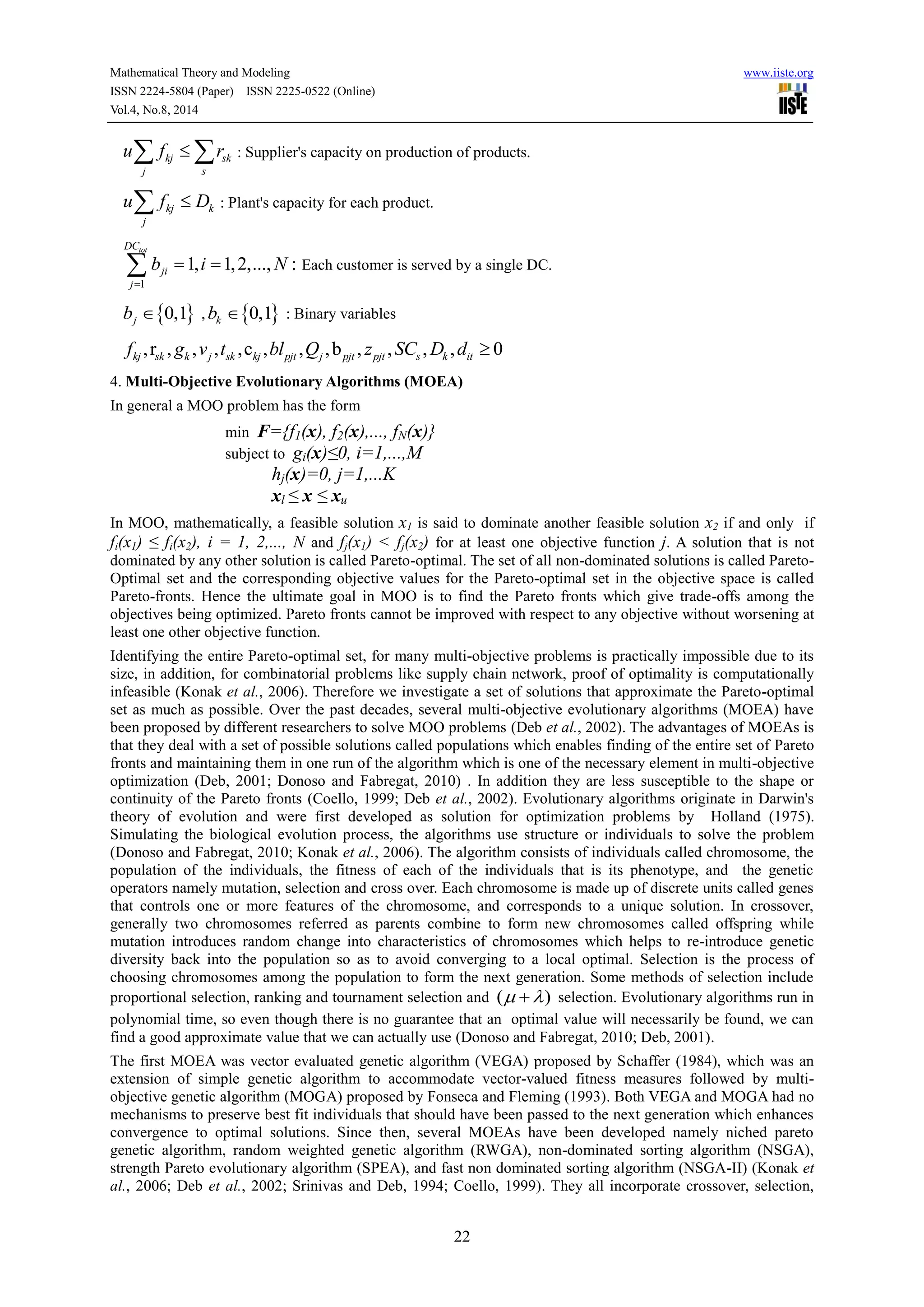
![Mathematical Theory and Modeling www.iiste.org
ISSN 2224-5804 (Paper) ISSN 2225-0522 (Online)
Vol.4, No.8, 2014
23
mutation and replacement, but they differ in the way they implement them and how they deal with multiple
objectives and preservation of diversity in the solutions.
In this research we make use of NSGA-II genetic algorithm proposed by Deb et al. (2002) which was aimed at
overcoming problems associated with NSGA. NSGA developed by Srinivas and Deb (1994) was based exactly
on MOGA except for the specification of the sharing parameter. However it has higher computational
complexity of O(MN3
) for M objectives and a population size of N lacked elitism and required specification of a
sharing parameter for the fitness value. Unlike NSGA, NSGA-II implements elitism which is a mechanism that
allows preservation of best fit individuals in a population to ensure good fitness already obtained does not get
lost in subsequent generations. It has a reduced computational complexity of O(MN2
). NSGA-II uses tournament
selection whereby a group of individuals takes part in a tournament and the winner is judged by fitness levels
that each individual brings to the tournament. It has been shown that it outperforms most contemporary MOEAs
like SPEA, PAES, etc and its performance has been tested on several test problems where it has given accurate
results in generating Pareto fronts (Deb et al., 2002; Pinto, 2004).
Our choice of NSGA-II for the research is based on the fact that it is an elitist and fast strategy, modular and
flexible, emphases on the non dominated solutions, can be applied to a large wide of problems and the
availability of global optimization toolbox in MATLAB that implements it so that we do not re-invent the wheel.
The main principle in NSGA-II is that we categorize all solutions into ranks and for each individual solution we
calculate the crowding distance. To determine the ranking, two entities are calculated for each solution p namely
np domination count representing the number of solutions that dominate solution p, and sp set of all solutions q
dominated by solution p. All solutions p with np = 0 are identified and ranked as 1, the first non-domination
front. Thereafter, we visit each member q of sp where np = 0 and reduce its domination count by 1. If nq = 0 then
solution q is ranked as 2, the second non-domination front. We continue in this way until all ranks are identified.
Solutions with rank 1 are non-dominated and represent the best. Then we calculate the overcrowding distance of
each solution which is the measure of the diversity of solutions along the front of the non dominated solutions
and enables the algorithm to obtain uniformly distributed solutions over the true Pareto fronts. The crowding
distance of each solution tan[ ]dis ceI i is calculated as follows:
Let n=|I|, I is set of solutions. For each ,i I assign tan[ ] 0.dis ceI
For each objective m sort the set I in ascending order based on the objective values.
For each objective m, assign large distances to the boundary solutions, tan tan[1] [ ] .dis ce dis ceI I n For all
solutions i=2 to n-1, then
tan tan max min
( [ 1] [ 1] )
[ ] [ ] ,m m
dis ce dis ce
m m
I i I i
I i I i
f f
where
[ ] :mI i th
m objective function value of the
th
i individual in the set ,I
max
:mf maximum value of the
th
m objective function,
min
:mf minimum value of the
th
m objective function.
NSGA-II uses a two step selection process, which combines binary tournament and ( ) selection (Reed et
al., 2003). The binary tournament allows only the fittest individuals to be placed in the mating population while
( ) selection, selects which of the parents or children should form the next generation. To enable elitism,
individuals for the next generation are selected from both the parents and children based on their non-domination
front and crowding distance in case of tier until N individuals. Here are the steps involved in the algorithm:
Step1: Generate a parent population Pt randomly and create an offspring population Qt from Pt using genetic
operators: selection, crossover and mutation each of size N.
Step 2: Combine Pt and Qt into a single population set St where |St| = 2N.
Step3: Classify and rank each individual in St.
Step 4: Select the best N individuals from St based on ranks and crowding distance to form a parent population
Pt+1 for the next generation.
Step 5: Repeat steps 1-4 until the termination criteria is met.](https://image.slidesharecdn.com/amulti-stagesupplychainnetworkoptimizationusinggeneticalgorithms-140811032046-phpapp01/75/A-multi-stage-supply-chain-network-optimization-using-genetic-algorithms-6-2048.jpg)
